Singapore is a vibrant and bustling city that offers a perfect mix of culture, food, and attractions. With just two days to explore this dynamic destination, it's important to make the most of your time. From iconic landmarks to delicious street food, there’s no shortage of things to see and do in Singapore. In this travel guide, I’m going to offer suggestions on how to spend two days in Singapore.
Singapore’s compact size makes it an ideal destination for a short but memorable stay. Plus, its efficient public transportation allows visitors to pack a lot of tourist sites in little time. Whether you're interested in sightseeing, eating or exploring the local history and culture, there's something for everyone to enjoy in Singapore.
A brief history of Singapore: Singapore has undergone significant changes throughout the centuries. It started off as a humble fishing village but quickly evolved into a prosperous, world-class destination. Thanks to its prime location along the Singapore Strait, Singapore established itself as an important trading port during the 14th century. The Brits colonized Singapore in the 19th century and it finally gained independence from Malaysia in 1965. Thanks to its complex history, Singapore is a multi-cultural country counting amongst its diverse heritage Chinese, Malays, Indians and Arabs.
Where does the name Singapore come from? Singapore used to be called Temasek until the 14th century. Legend has it that a Sumatran prince spotted a lion while he was hunting and took it as a sign of good fortune. This encounter inspired him to rename the country Singapura which means "Lion City" in Malay.
Now that you know a little bit about this incredible city-state, let’s get started on what to do during a two-day itinerary in Singapore. This travel guide also includes money-saving tips and practical information to better plan a trip to Southeast Asia’s Lion City.

TABLE OF CONTENTS
ToggleHOW TO SPEND TWO DAYS IN SINGAPORE
Disclaimer: This post contains affiliate links. I will earn a commission if you make a purchase by clicking on the link at no extra cost to you.
1. EXPLORE BUSTLING CHINATOWN
With its colorful streets, ornate temples, and mouthwatering cuisine, Chinatown offers a glimpse into the city-state's diverse heritage and traditions. From traditional Chinese medicine shops to modern boutiques and trendy eateries, this historic district is a melting pot of old-world charm and contemporary flair.
The bustling neighbourhood of Chinatown attracts millions of visitors every year. The Chinatown Street Market is where most visitors to Singapore start their journey in Chinatown. Endless rows of souvenir shops and Chinese restaurants occupy the old, traditional Chinese shophouses. To experience a more authentic side of Chinatown, I suggest venturing away from the well-trodden tourist trail.
However, this historical neighborhood isn’t just about eating and shopping; Chinatown is also home to two of the most significant landmarks in Singapore.
Buddha Tooth Relic Temple & Museum: The temple was built in 2007 and houses the sacred Buddha Tooth Relic. The relic is kept in a giant, golden stupa weighing 3,500 kg. Most of the gold was donated by devotees. Only monks are allowed in the chamber but visitors can view Buddha’s left canine tooth relic from the viewing platform. Entrance is free.
Sri Mariamman Temple: Interestingly, the oldest Hindu temple in Singapore is located in the heart of Chinatown. Sri Mariamman Temple was originally built of wood in 1827 and was reconstructed in 1962 to resemble typical Indian architecture. The temple is located at 244 Bridge Road. Opening hours are from 6:00 a.m. - 12:00pm and 6:00 p.m. - 9:00 p.m.

![]()
2. EAT AT A HAWKER CENTER
Although Southeast Asia is famous for its street food, this isn’t the case in Singapore. Instead, authentic street food is available at more than 100 hawker centers scattered around the city. Hawker centers are indoor food courts created in Singapore in order to keep the streets clean. In fact, Singapore takes pride on being the cleanest country in Southeast Asia!
Singapore’s culinary scene was heavily influenced by its diverse cultural tapestry. As a result, hawker stalls serve savoury dishes ranging from Chinese to Malay to Indian to Peranakan*. The choice is bewildering! In a city as expensive as Singapore, hawker centers offer a wide variety of local dishes and snacks at very affordable prices. Sampling different local dishes at hawker centers is definitely a must-do while visiting Singapore!
*Peranakan refers to people of mixed Chinese and Malay heritage.
Are you a foodie? This highly-recommended culinary tour includes 10 local tastings to savour!

3. IMMERSE YOURSELF IN COLOURFUL LITTLE INDIA
The scents, sounds and colours of Little India render it the most charismatic neighbourhood in Singapore. In more recent years, hip boutique hotels have opened up alongside longstanding mom-and-pop shops but the essence of Little India has remained. The smorgasbord of different architectural eras is a perfect example of modern and traditional co-existing seamlessly. The best thing to do in Little India is to wander around and find a place to stuff your face!
As expected, Little India is rife with restaurants and casual eateries offering authentic meals including vegan/pure vegetarian options. Awaken your taste buds by indulging in some savoury Indian snacks such as thali and spicy samosas. I actually had one of the tastiest vegetarian meals in Little India, and it only cost a few Singaporean dollars.
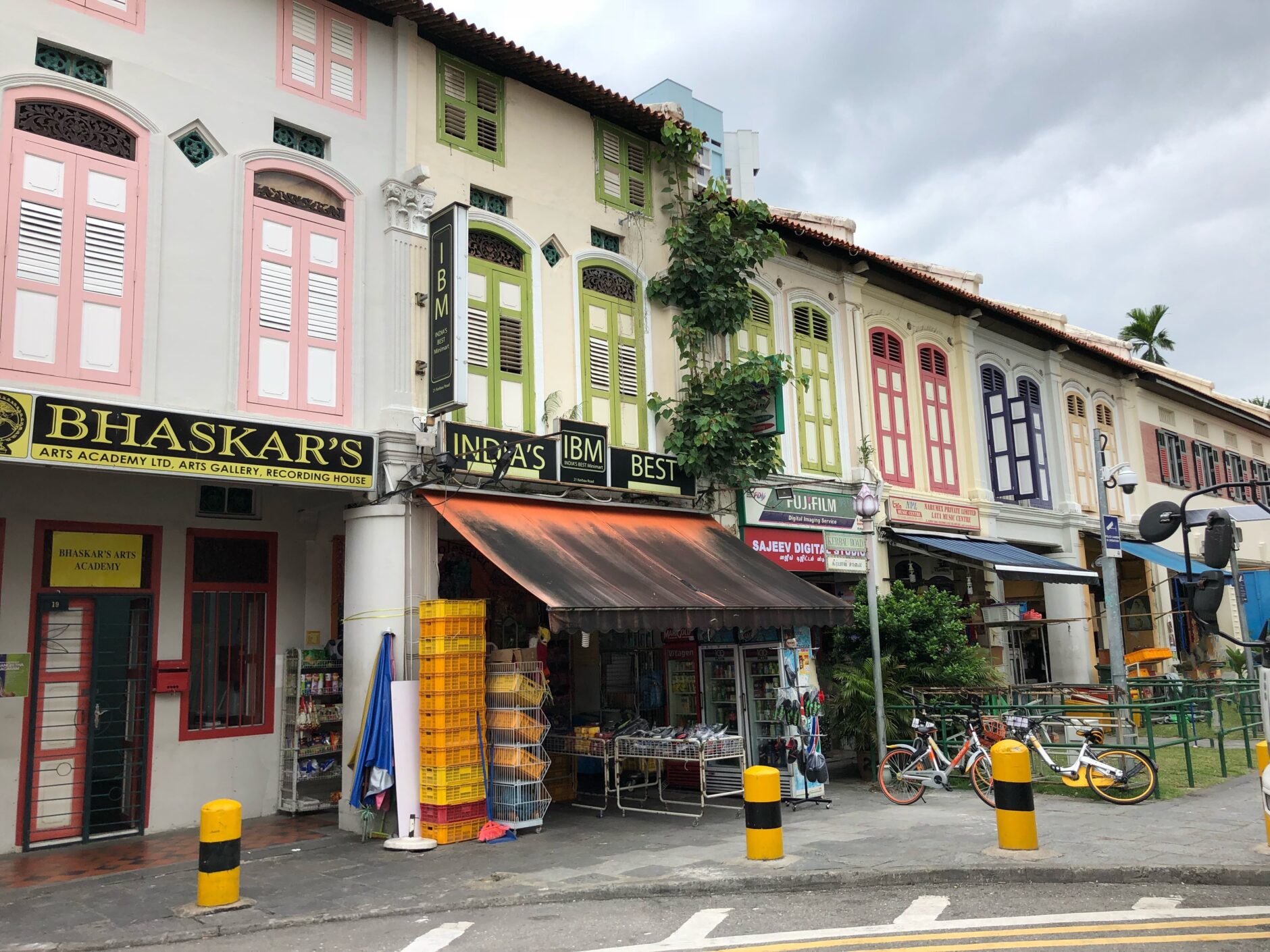
After stuffing yourself silly, immerse yourself in more of Little India by checking out the most popular sites:
House of Tan Teng Niah (37 Kerbau Road): This historical house was built in 1900 by a Chinese businessman and is the only Chinese villa left standing in Little India. The villa fell into a state of disrepair but was restored in the 1980's using vibrant colours reminiscent of India.

Sri Veeramakaliamman Temple (141 Serangoon Road): One of the oldest temples in Singapore built by Indian migrants. The temple is named after the goddess, Sri Veeramakaliamman, who was chosen as a symbol of security and comfort for Indian migrants arriving in Singapore. Entrance to the temple is free.
Read also: Where to Find the Best Street Art in Singapore (including Little India)
Mustafa Center (145 Syed Ali Road): This huge, three-floor mall has been around for decades and has become a landmark in Little India. Mustafa Center is open 24 hours and offers budget-friendly shopping on items ranging from clothing, accessories, electronics, homeware, groceries and more! It’s also a great place to take in some of the local culinary delights. As a sidenote, have a look at the ornate facades of the shophouses on Syed Ali Road.

4. DELVE INTO KAMPONG GLAM INCLUDING ARAB STREET & HAJI LANE
Kampong Glam, the historical Muslim quarter of Singapore, is home to the beautiful Sultan Mosque. The mosque was originally built in 1824 but was extensively restored in 1932. As the biggest mosque in Singapore, Sultan Mosque can hold up to 5000 worshippers. Singaporean Muslims, regardless of income and social status, contributed generously to the construction of the mosque. Those with lesser means contributed to the construction by donating glass bottle ends to decorate the base of each dome.
Visitors are allowed to tour the mosque outside of prayer times posted on the notice board. Keep in mind that women need to cover their knees and shoulders as well as wear a head scarf. Sultan Mosque is located on Muscat Street at one end of Arab Street (see next topic).

Arab Street: Let yourself be magically transported to the Middle East on Arab Street where Turkish restaurants and hookah lounges abound. Middle Eastern flare also permeates in the surrounding streets with shops selling items such as hand-loomed carpets, bronze lanterns and textiles.
Join this Hop-on Hop-Off bus tour to explore at your leisure Kampong Glam, Little India and Chinatown as well as other city highlights.
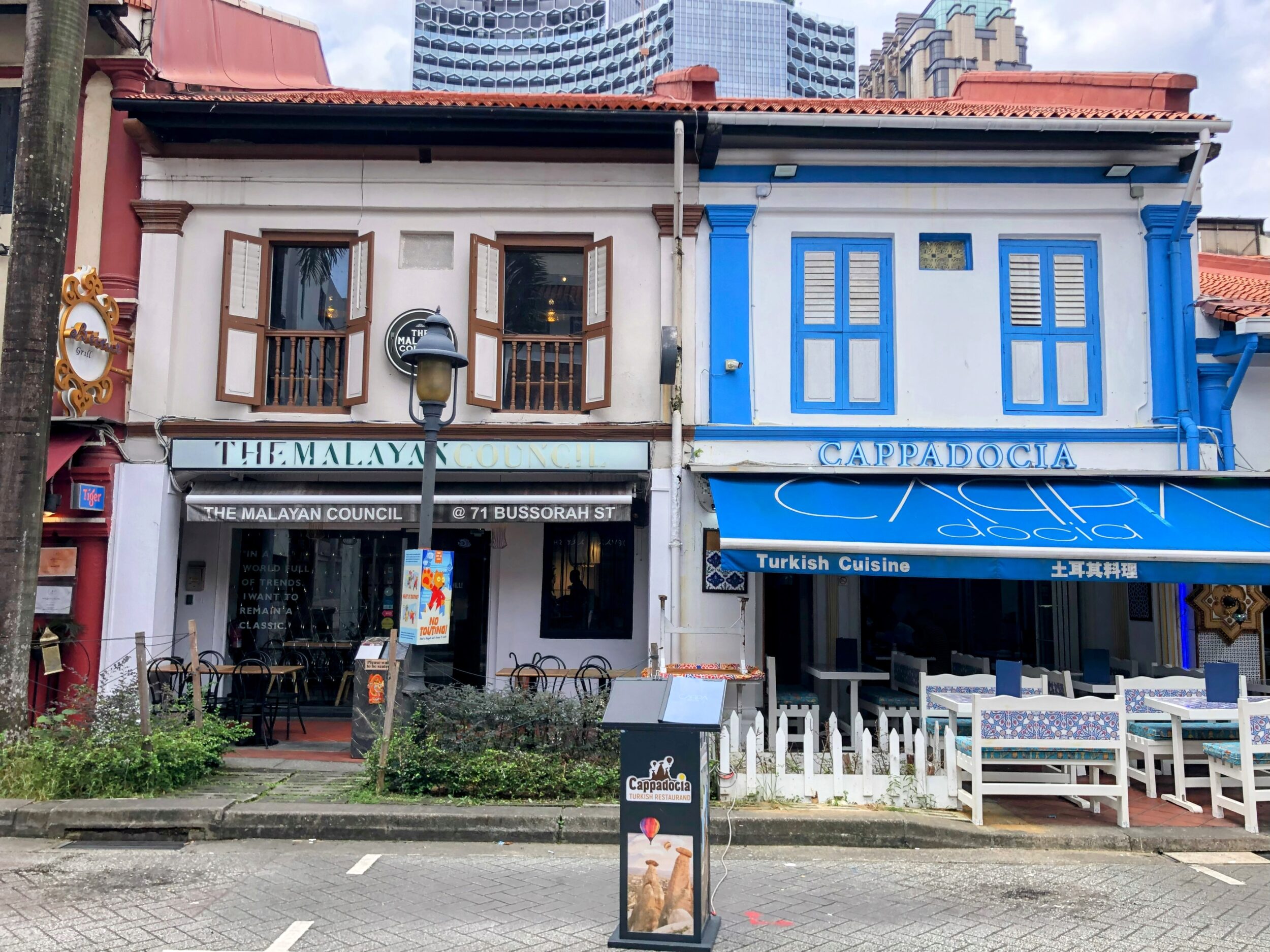
Haji Lane: Hip and happening Haji Lane is only a short walk from Arab Street. This bustling little lane has become a gathering hub for artists and creative minds from Singapore and beyond. Haji Lane is lined with Indie designer boutiques, hipster restaurants, laidback eateries and funky watering holes. One of my favourite things to do in Singapore was exploring the nooks and crannies of Haji Lane! Make sure to head here during your two days in Singapore.
In more recent years, Kampong Glam has become even more of a tourist hotspot thanks to its incredible murals created by local and international artists. The most popular murals are easy to spot (just follow the crowds) but I suggest venturing into small alleyways to see some lesser-known artwork. I’m going to elaborate more on Singapore street art in no. 6 of this travel guide.
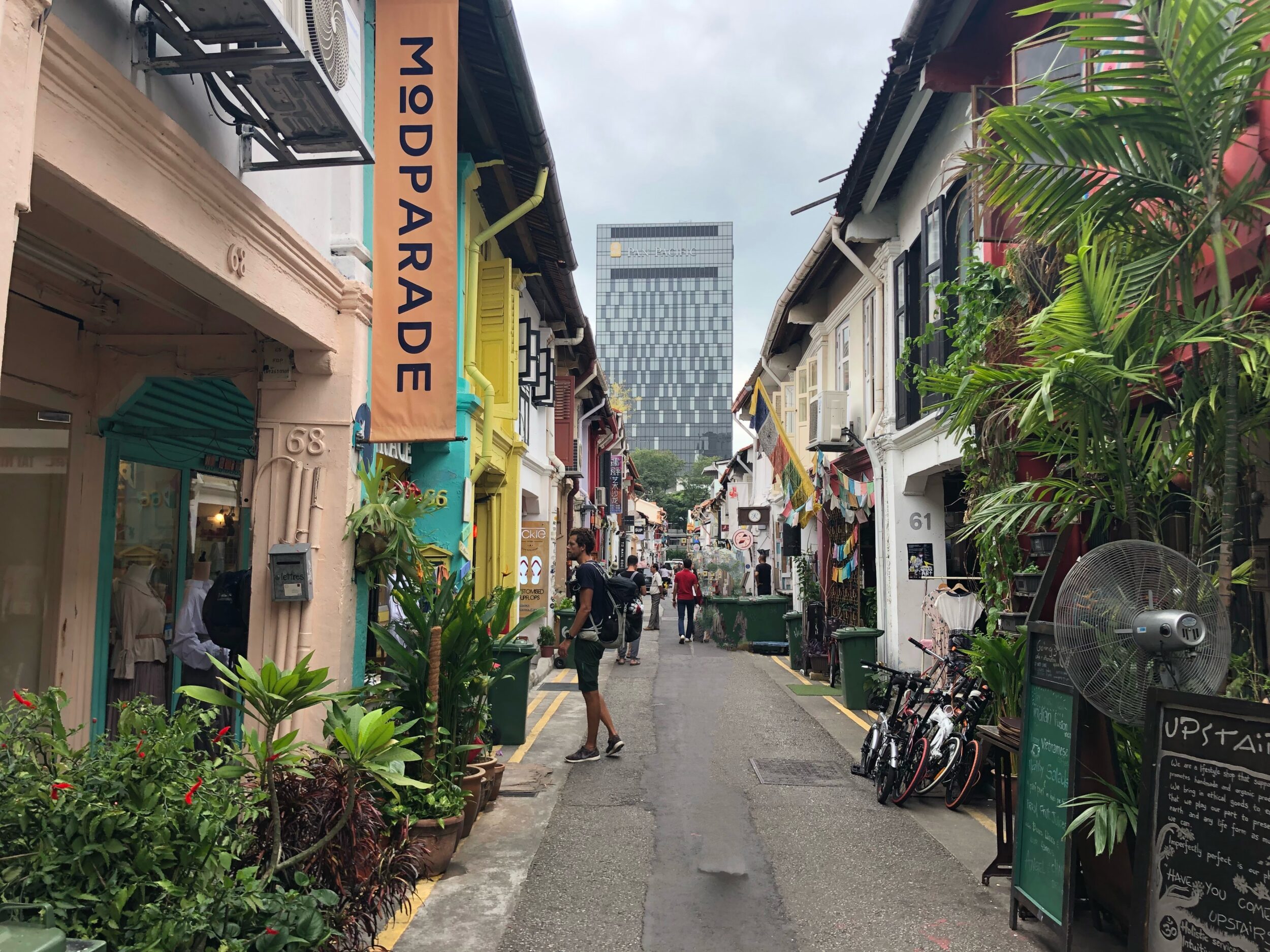
5. ADMIRE HERITAGE HOUSES IN BLAIR PLAIN CONSERVATION AREA
Blair Plain Conservation Area is known for its beautiful heritage shophouses. Shophouses are common in Singapore but none are as stunning as the ones in Blair Plain! Each 19th-Century terrace house was meticulously restored with great care and detail. I absolutely love how these traditional houses are painted in unconventional, vivid colours!
This trendy, upper-class neighbourhood is a hub of curated boutiques, quaint coffee shops, specialty restaurants, antique dealers and art galleries. Blair Plain Conservation Area is awesome and I highly suggest spending some time here. If I could afford to live in Singapore, Blair Plain would be a top contender. A girl can dream, haha.
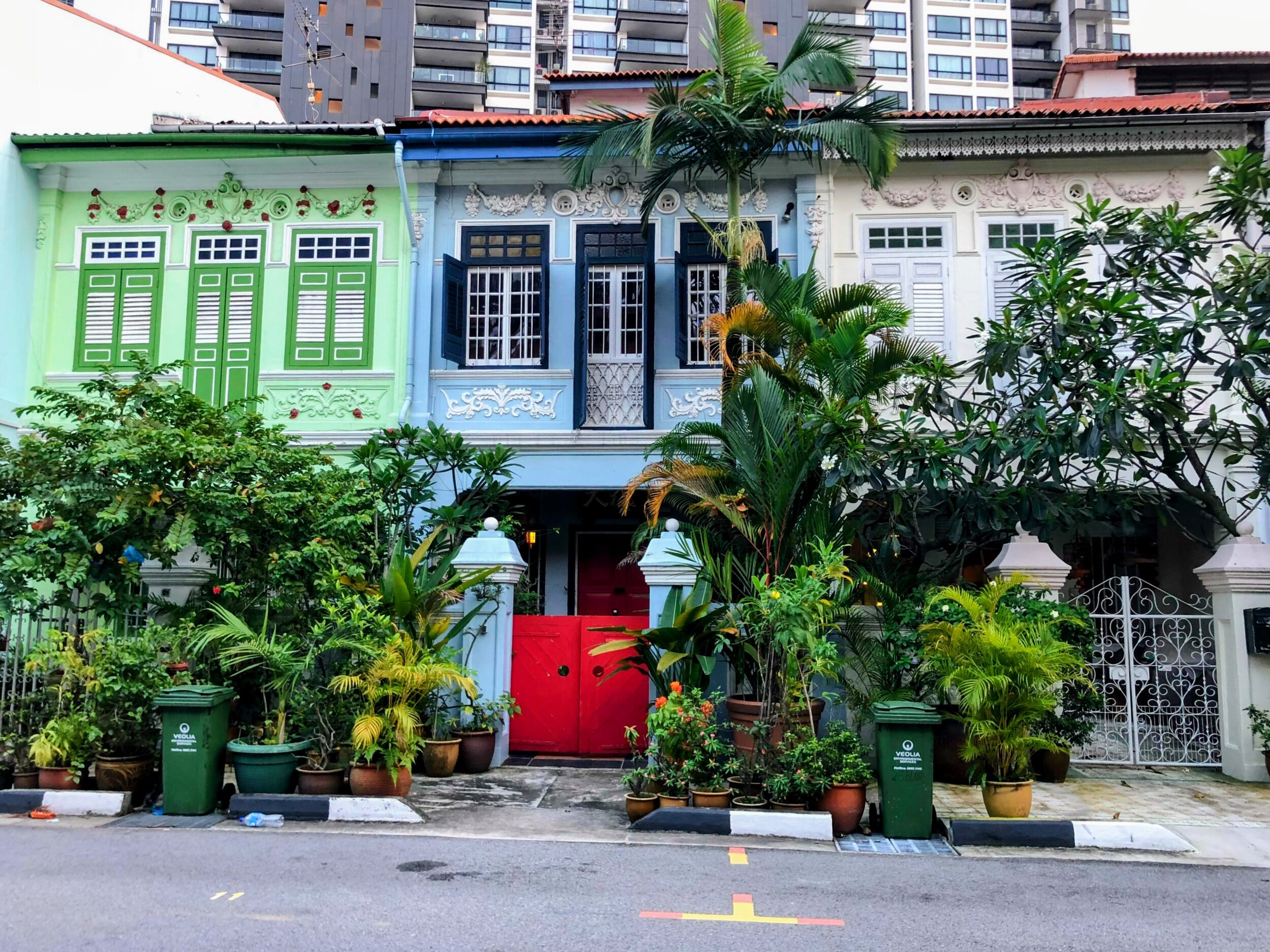
6. PHOTOGRAPH AMAZING STREET ART
Singapore is known for its clean streets and modern architecture, but hidden within the city's bustling neighborhoods is a vibrant street art scene waiting to be explored. From colorful murals adorning shophouses to intricate graffiti pieces in unexpected alleyways, Singapore's streets are a canvas for local and international artists to showcase their creativity and talent.
As a fan of street art, I was delighted to discover some fantastic artwork especially around Haji Lane and in Little India. I’m convinced the larger-than-life murals will leave you in awe but expect large crowds especially around Haji Lane. Click, click, click.
Special mention: Former accountant-turned-visual-artist, Yip Yew Chong, has become somewhat of a local celebrity. YC Yip’s detailed, lifelike murals fondly illustrate his memories of yesteryear. Many of his endearing murals can be found in the Blair Plain Conservation Area, Chinatown and Kampong Glam.
Check out my guide on where to find the best street art in Singapore to not miss any photo ops!
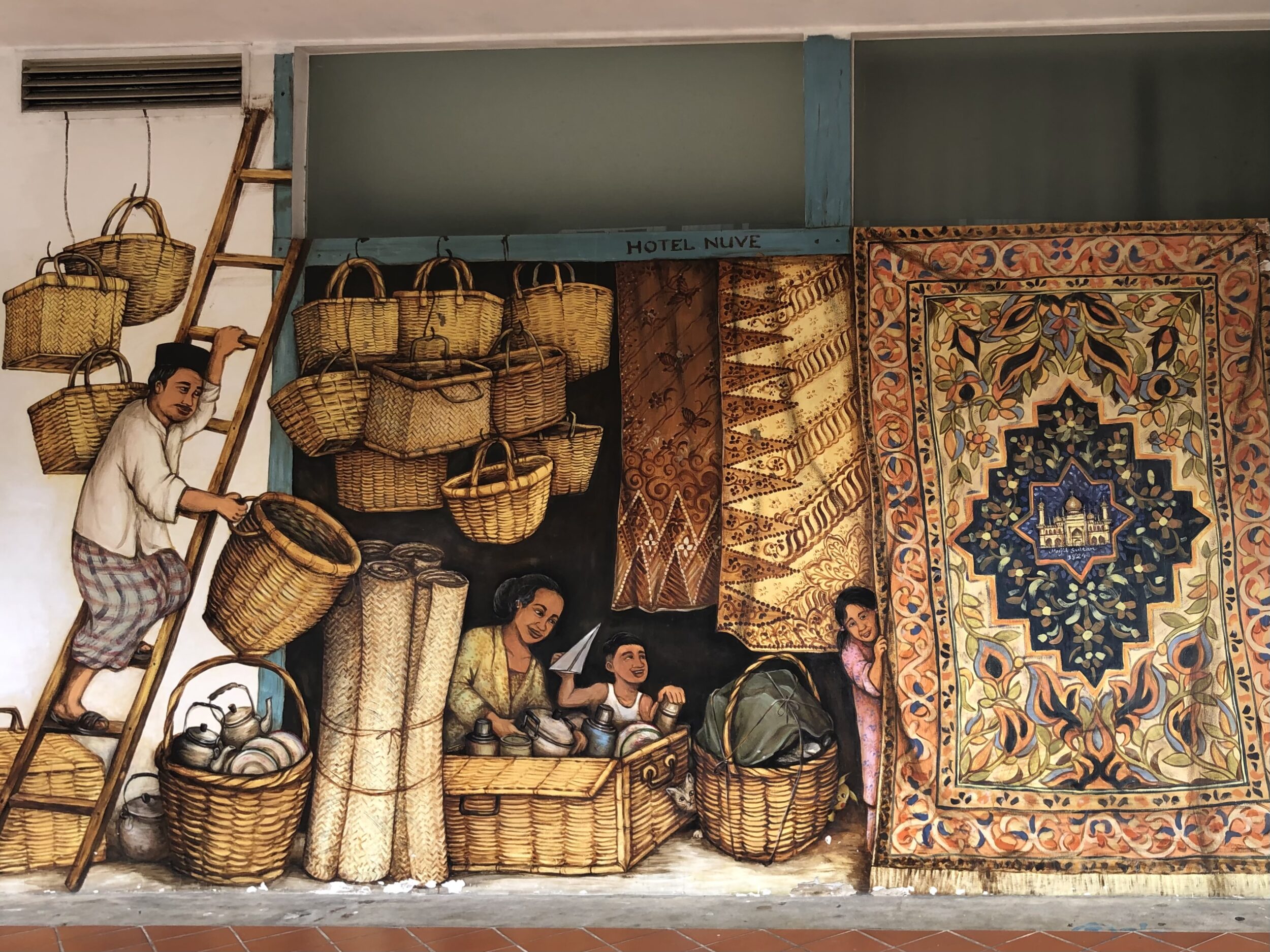
7. CHECK OUT GEYLANG RED LIGHT DISTRICT
Including the Red Light District is kind of odd but let me explain how I ended up there. I was in Singapore during the very, very busy Chinese New Year, and the only affordable hotel I could find was in Geylang. The Red Light District isn’t a must-see but if you’re staying in this area then you might as well have a look. I found it interesting to see a less “polished” side of Singapore. Maybe you will, too.
The less “polished” side of Singapore consists of sex shops, seedy night clubs, the occasional illegal street gambling and legally-licensed brothels. Yes, you read that right, brothels are legal in Singapore. Cheap Chinese and Indian eateries also abound in Geylang. Despite its dubious activities, Geylang is safe even at night and, is surprisingly clean. This is Singapore, after all.

8. VISIT SINGAPORE BY BIKE
Singapore has 3 bike-sharing apps: SG Bike (including MoBike), startup Moov and newcomer Anywheel. It's very easy to download any of these three apps (available in English) to rent a bike anywhere in the city. I was lucky to get a free 3-day trial offered by MoBike but daily bike rentals start as low as about S$2/day.
If you’re visiting Singapore for two days then renting a bike is a great option! Once you get tired, you can simply leave the bike at any random location and go on your merry way. Remember that you’ll need to have access to Wi-Fi to unlock the bikes using your smart phone.
Download the Wireless@SGx app to automatically connect to public WiFi in Singapore.
If you’re keen on visiting Singapore by bike, this highly-rated tour is a great option or this 20-km tour includes traditional snacks and much more!
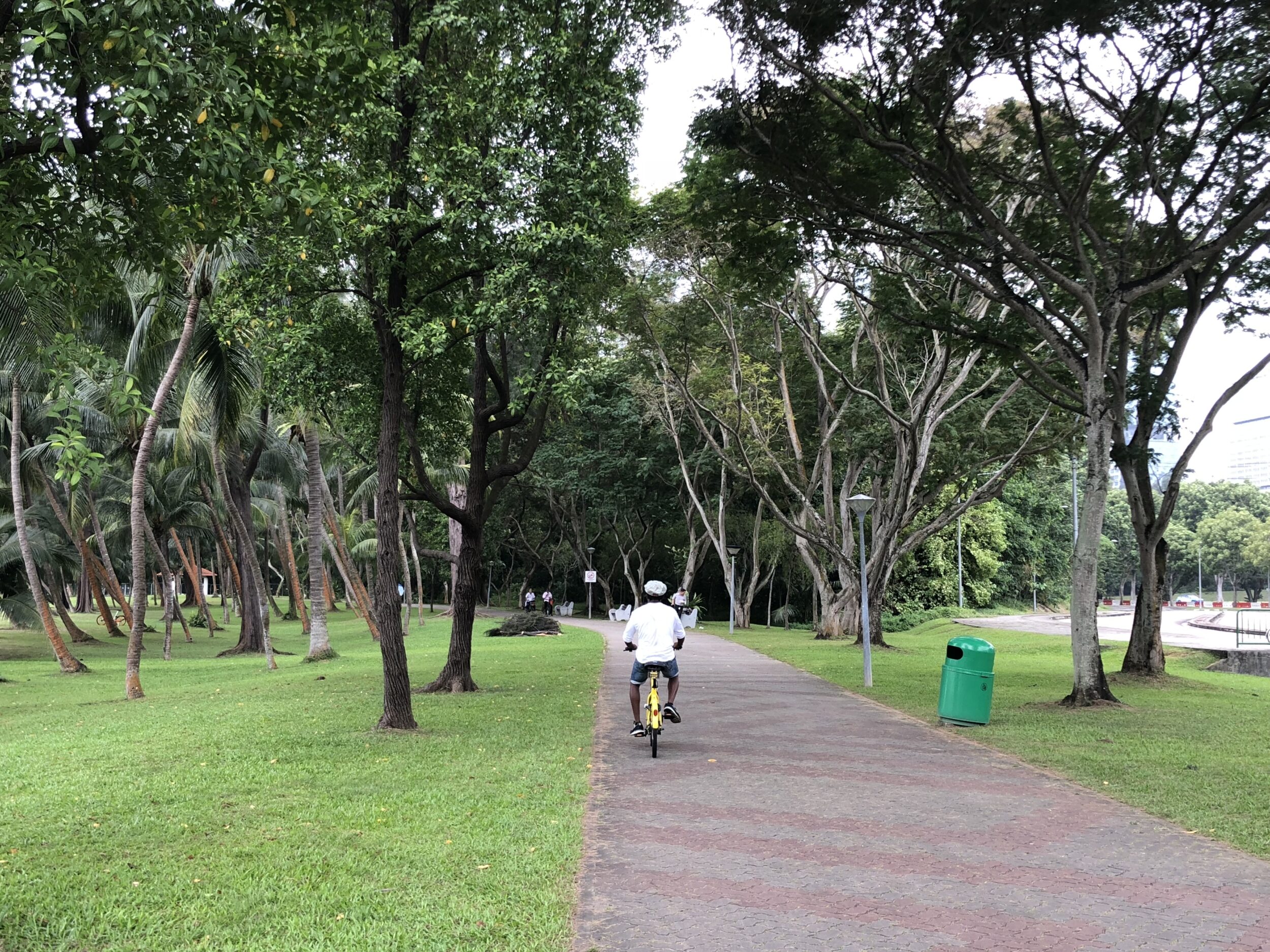
9. TWO DAYS IN SINGAPORE MUST-SEE: ICONIC LANDMARKS IN MARINA BAY
One of the best things to do while visiting Singapore for two days is to hang out at Marina Bay. Picture-perfect Marina Bay boasts the most iconic landmarks in Singapore such as the Merlion and the Marina Bay Sands Hotel. Architecture buffs will certainly be impressed by the many eye-catching, award-winning buildings.
Merlion: Part lion and part fish, this mythical hybrid creature is Singapore’s national icon. The scaly body represents Singapore's humble beginning as a fishing village and the lion’s head refers to Singapura meaning "Lion City" in Malay.

Marina Bay Sands Hotel: This award-winning 5-star hotel was designed by architect, Moshe Safdie. Its ship-like structure straddling three towers has become one of the most recognizable buildings of Singapore. Splurging on a room at Marina Bay Sands Hotel gives exclusive access to the largest rooftop infinity pool in the world! The pool itself has become an Instagram favourite.
ArtScience Museum: Moshe Safdie also designed the ArtScience Museum which is part of the Marina Bay Sands complex. This unique structure was built to resemble a blooming lotus flower symbolizing the welcoming hand of Singapore. The museum hosts regular exhibitions, events and workshops. Check the updated calendar of events on the official website.
The Helix: Another architectural feat located in the Marina Bay Area, the Helix is a pedestrian bridge built to resemble a DNA strand. The result is a highly unusual stainless-steel structure that looks like it came straight out of a science fiction movie!

10. SINGAPORE HIGHLIGHTS: GARDENS BY THE BAY & SUPERTREE GROVE
Gardens by the Bay is a must-visit when traveling to Singapore! Its claim to fame is the one-of-a kind Supertree Grove. The grove is made up of three gardens featuring hundreds of thousands of plant species from around the world. The concrete/steel Supertrees measure between 25-50 meters high and are topped with scraggly pink “branches”. What’s more, over 700 plant species grow organically on the artificial trunks. The otherworldly Supertree Grove should definitely be on every visitor’s list of top things to see in Singapore!
The Supertree Grove becomes even more magical at night. Experience the mesmerizing Garden Rhapsody, a light and music show like no other. A different theme is featured every month with enticing titles such as Retro Fever, Tales of the Moon and Enchanted Woods. Garden Rhapsody shows are featured daily at 7:45 p.m. and 8:45 p.m.
Entrance to the Supertree Grove and Garden Rhapsody is free but admission fees apply for other attractions in Gardens by the Bay.
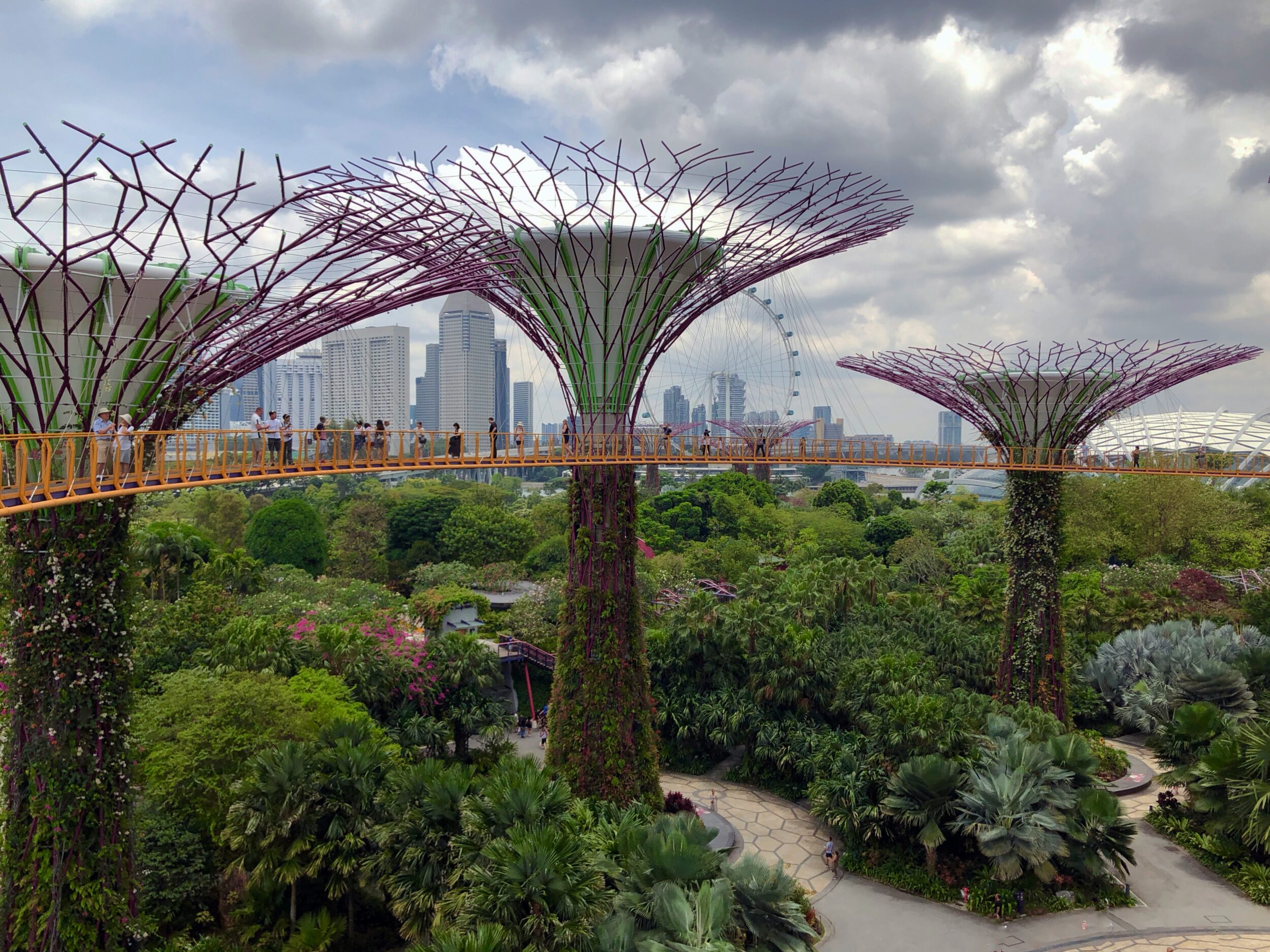
11. STROLL ALONG THE SINGAPORE RIVER PROMENADE
The Singapore River Promenade is a wonderful place to take a stroll. The tree-lined Promenade stretches along Boat Quay on both sides of the river. Sites along the way include the historical Fullerton Hotel and an unobstructed view of the Central Business District, the most impressive skyline in Singapore. The stark contrast of the stout Chinese shophouses and the glossy skyscrapers recalls what Singapore once was and what it has become.
The once-defunct shophouses have long been transformed into restaurants, bars and pubs popular with expats and the corporate crowd. It’s said that some of the best restaurants in Singapore are in Boat Quay. Given the number of bars and pubs, it’s also the ideal place to enjoy Happy Hour. Chin-chin!

12. SPOT QUIRKY SCULPTURES ALONG THE SINGAPORE RIVER
I’m sure you’re going to spot more sculptures along the Singapore River Promenade but the following were my favourite ones. Unfortunately, I couldn’t find the designated artists except for one sculpture created by a famous artist.



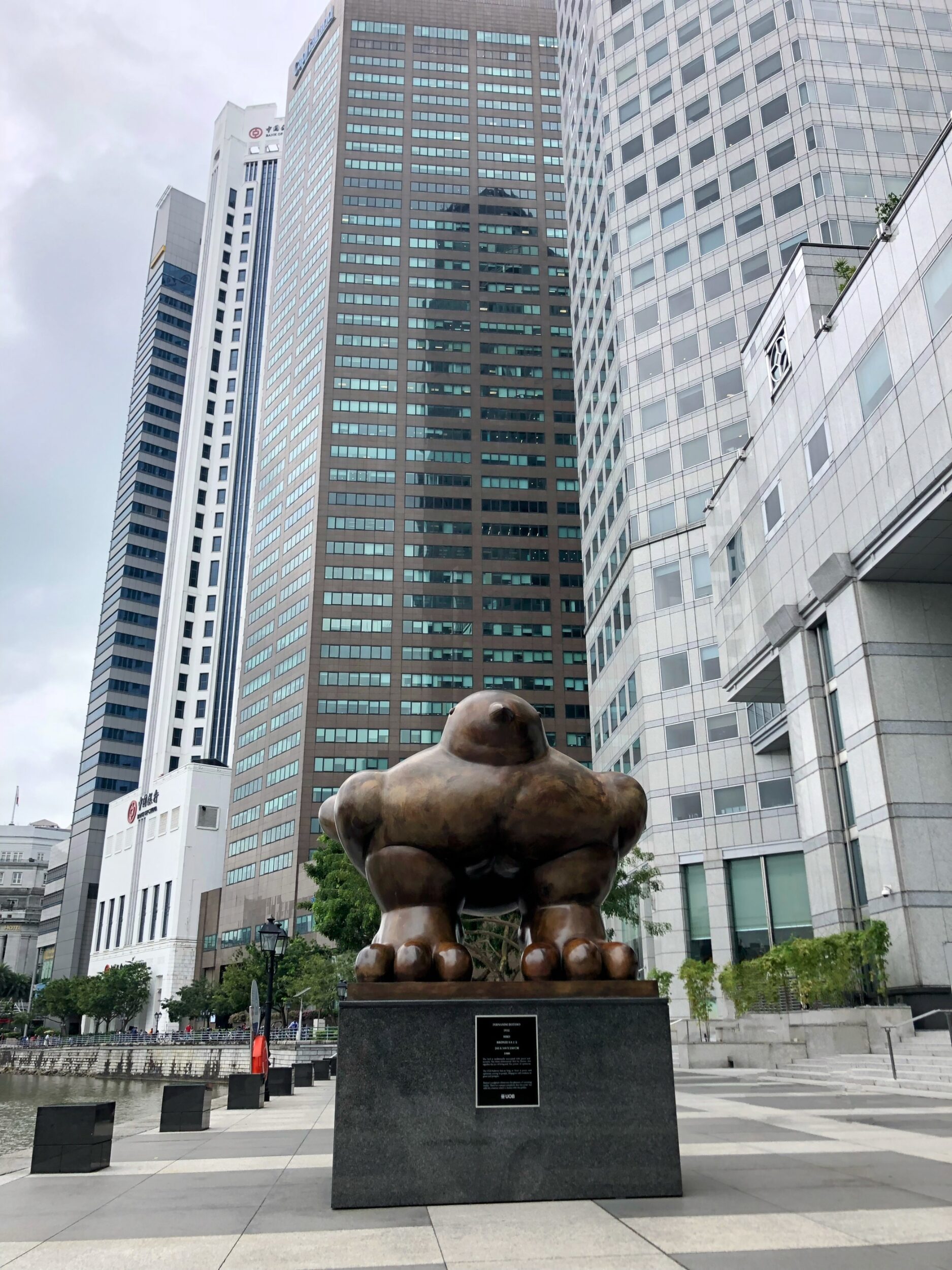
13. WALK ACROSS HISTORICAL BRIDGES
Historical bridges are an integral part of Singapore’s landscape. In fact, five bridges hold a ‘conservation status’ meaning they can never be demolished. I only included three bridges which cross the Singapore River along Boat Quay:
Cavenagh Bridge (near Fullerton Hotel): Cavenagh Bridge was manufactured in Scotland in 1868 and was assembled by Indian convicts a year later in Singapore. It’s also the oldest suspension bridge in Singapore but has been a pedestrian overpass for more than one hundred years.
Anderson Bridge (in front of Fullerton Hotel): This white, metal lattice bridge was built in 1910 to alleviate traffic from its less sturdy neighbour, Cavenagh bridge. Anderson Bridge is still used for vehicles to this day.
Elgin Bridge (northern tip of Boat Quay): This was the first wooden footbridge to have been built in Singapore in the early 1800’s. The current ironclad bridge was built in 1929. Elgin Bridge was used to connect Chinese merchants to Indian traders on the other side of the river.

14. UNIQUE ARCHITECTURAL BUILDINGS IN SINGAPORE
Singapore has some very unique architectural buildings that are definitely worth seeing! Amongst the most uniquely-designed buildings is the Bugis+ Mall by CapitaLand. The large mall resembles a cluster of honeycombs interspersed with leafy trees. Bugis+ is located at 201 Victoria Street in the heart of Singapore’s Civic & Cultural District. Opening hours are from 10 a.m. to 10 p.m. every day.
Other buildings worth mentioning include The Hive at Nanyang Technological University, Pinnacle@Duxton (near Blair Plain Conservation Area) and Parkroyal on Pickering in the Central Business District (CBD).

15. ENJOY SINGAPORE!
However you choose to spend two days in Singapore, remember to enjoy your trip! Have a look at all the tours offered in Singapore to compliment your visit:
TIPS ON HOW TO SAVE MONEY WHEN VISITING SINGAPORE
Singapore is infamous for being the most expensive country in Southeast Asia but you can find ways to stretch your dollar. Here are a few tips on how to save money while visiting Singapore:
Hawker centers: Eating at hawker centers is one of the best ways to save money in Singapore. A traditional meal whether it be Chinese, Malay, Indian or Perenakan only costs a few dollars. Hawker centers offer a unique chance to save money while delving deep into Singaporean culture.
Walking: Walking is an excellent way to save money while traveling in Singapore. Singapore is very pedestrian-friendly thanks to its proper sidewalks and orderly driving. Keep in mind that crossing the street more than 50m from a pedestrian crossing (aka jaywalking) is an offence that can entail a fine.
Use public transportation: Singapore has excellent and affordable public transportation. Bus and MRT fares can be paid by using mobile wallets or contactless credit cards. Fares start at around S$1 and are based on distance. Get a Singapore Tourist Pass offering unlimited free transportation for one, two or three days.
Download GRAB or GoJek: GRAB and GoJek are Southeast Asia's versions of Uber. Both ride-hailing services are efficient and more cost-effective than regular taxis. Of course, WiFi is needed to use these apps.
Accommodation: Accommodation in Singapore is much more expensive compared to other countries in Southeast Asia. That said, the following are the “cheapest” accommodation options in Singapore:
1) Geylang: The most affordable hotels in Singapore are in Geylang, aka the Red Light District. A private room with private bathroom starts at around US$60/night during low-season. As a reference, I stayed at Hotel Duke. The room was very small and the bathroom was tiny but it was cleaner than I expected. However, keep your expectations low (wink). I recommend staying in Geylang if your priority is to save money while visiting Singapore. Compare prices for hotels in Geylang.
2) Capsules: Due to the ever-increasing hotel prices, several capsule hotels have sprouted all over Singapore. Capsule hotels are a good option if you want to experience this unique sleeping arrangement and if you’re not claustrophobic, haha. However, prices are comparable to a private room with private bathroom in Geylang so it comes down to personal preference and location.
3) Hostels: Of course, hostels offer the cheapest accommodation in Singapore. A single bed in a shared dorm room including shared bathroom starts at around US$30/night. Sorry, I don’t stay in hostels so I don’t have any recommendations but check HostelWorld for prices.
WHAT TO KNOW BEFORE TRAVELING TO SINGAPORE: PRACTICAL INFORMATION
Currency: The currency in Singapore is the Singaporean dollar (SGD). You can check up-to-date currency rates here ($1 SGD = .74 USD). As for my Canadian peeps, CAD is almost equal to SGD. ATM’s are widely available in Singapore. Credit cards are mostly accepted except in smaller venues.
Tired of paying hefty bank fees when traveling? Wise is the best option for managing money in 160 countries & over 40 local currencies. Application is free, quick and easy.

Official languages: Official languages in Singapore include Malay, English, Tamil and Mandarin. The national language is Malay. Many locals speak Singlish which is colloquial English spoken with a distinct Singaporean accent. English is widely spoken in Singapore making it really easy to get around.
Visa requirements: Always make sure to check visa requirements before traveling to any country. Some nationalities are permitted to stay in Singapore without a visa for a duration of 30 days. Check on the official website for more details.
When is the best time to visit Singapore? Given its tropical climate, Singapore is mostly hot and humid all year round with occasional showers throughout the year. However, the official rainy season is from December to March. That said, Singapore is an ideal destination any time of year.
What to wear in Singapore: Singapore is a cosmopolitan city with no specific dress codes (except in mosques). Remember it’s usually hot and humid so dress accordingly.
Is Singapore safe to visit? Absolutely! Crime, street violence and petty theft are extremely uncommon in Singapore making it one of the safest countries in the world even for solo female travelers. The estimated 86,000 CCTV cameras probably contribute in keeping the crime rate low.
How to get to Singapore: The only international airport in Singapore is Changi Airport located about 20km from most of the main attractions. Getting anywhere in the city is easy by either taxi, ride-hailing services (download Grab) or public transportation using the MRT linked to the airport.
If you’re leaving from Changi Airport, don’t miss the Jewel Rain Vortex, the world’s tallest indoor waterfall located in Terminal 2.
Search for the best flights to Singapore using Skyscanner, the most effective flight search engine.
How to get from Malaysia to Singapore: Most travelers leave from Kuala Lumpur, the capital city of Malaysia, to get to Singapore. This popular route is serviced by many buses several times a day from different departure points. The journey takes about 5 hours or more depending on how long it takes to go through Customs & Immigration. Tickets can be reserved online via BusOnlineTicket (app or website) or 12Go, the most popular online bus reservation platform for Southeast Asia.
Another option would be to stay in the border city of Johor Bahru, walk to the Customs & Immigration counter in Malaysia and then cross over to the Woodlands checkpoint in Singapore. Afterwards, head to the bus terminal to choose from several buses going to Singapore.
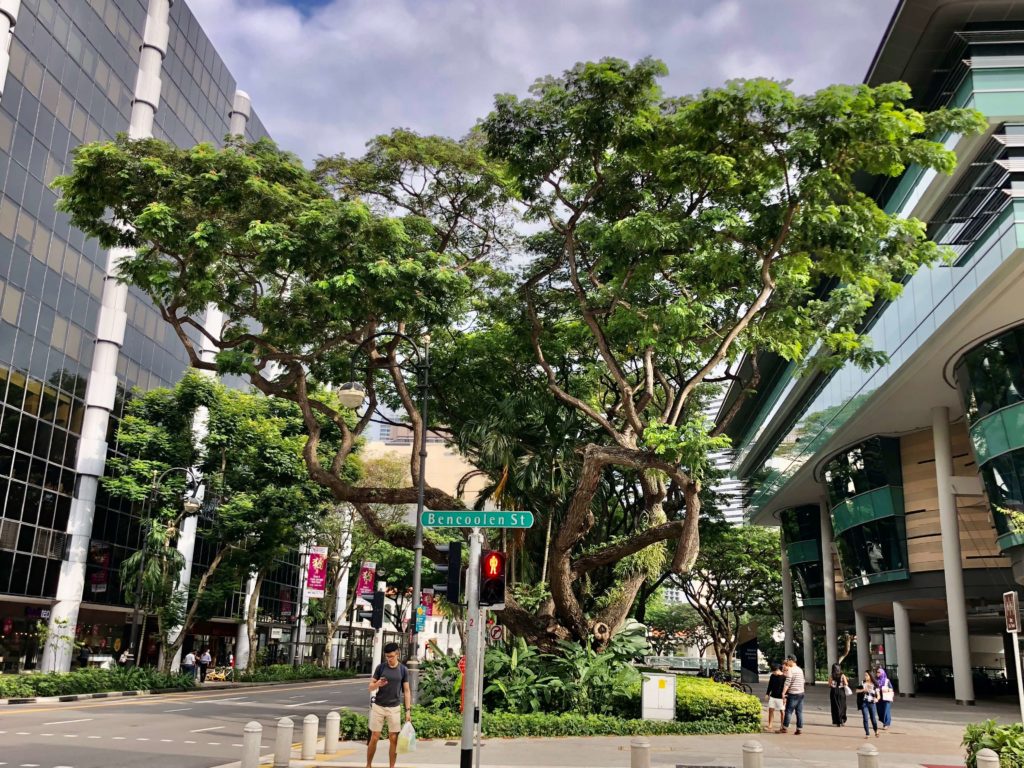
TRAVEL RESOURCES
- Verify visa requirements for Singapore on the official website
- Book flights to Singapore via Skyscanner
- Buy bus tickets on 12GoAsia
- Compare hotel prices in Singapore on Booking.com & Agoda
- Check hostel prices on HostelWorld
- Stay connected using an Airalo E-sim for Singapore
- Search for tours & excursions in Singapore
- Shop for affordable travel insurance with SafetWing
- Save on conversion fees while traveling with Wise
- Protect your online privacy with a VPN: ExpressVPN, Surfshark, NordVPN
PIN THIS POST!
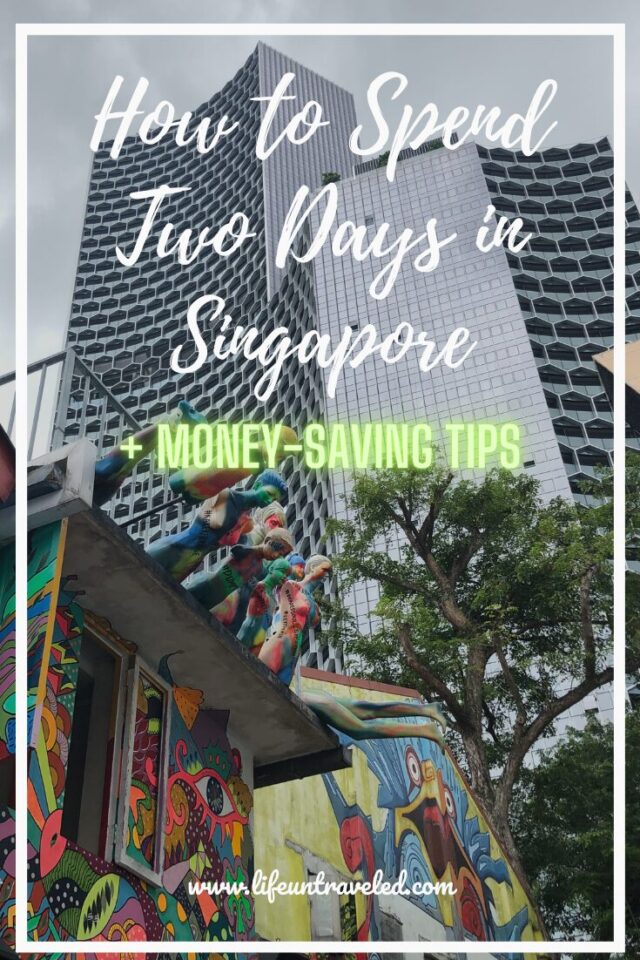

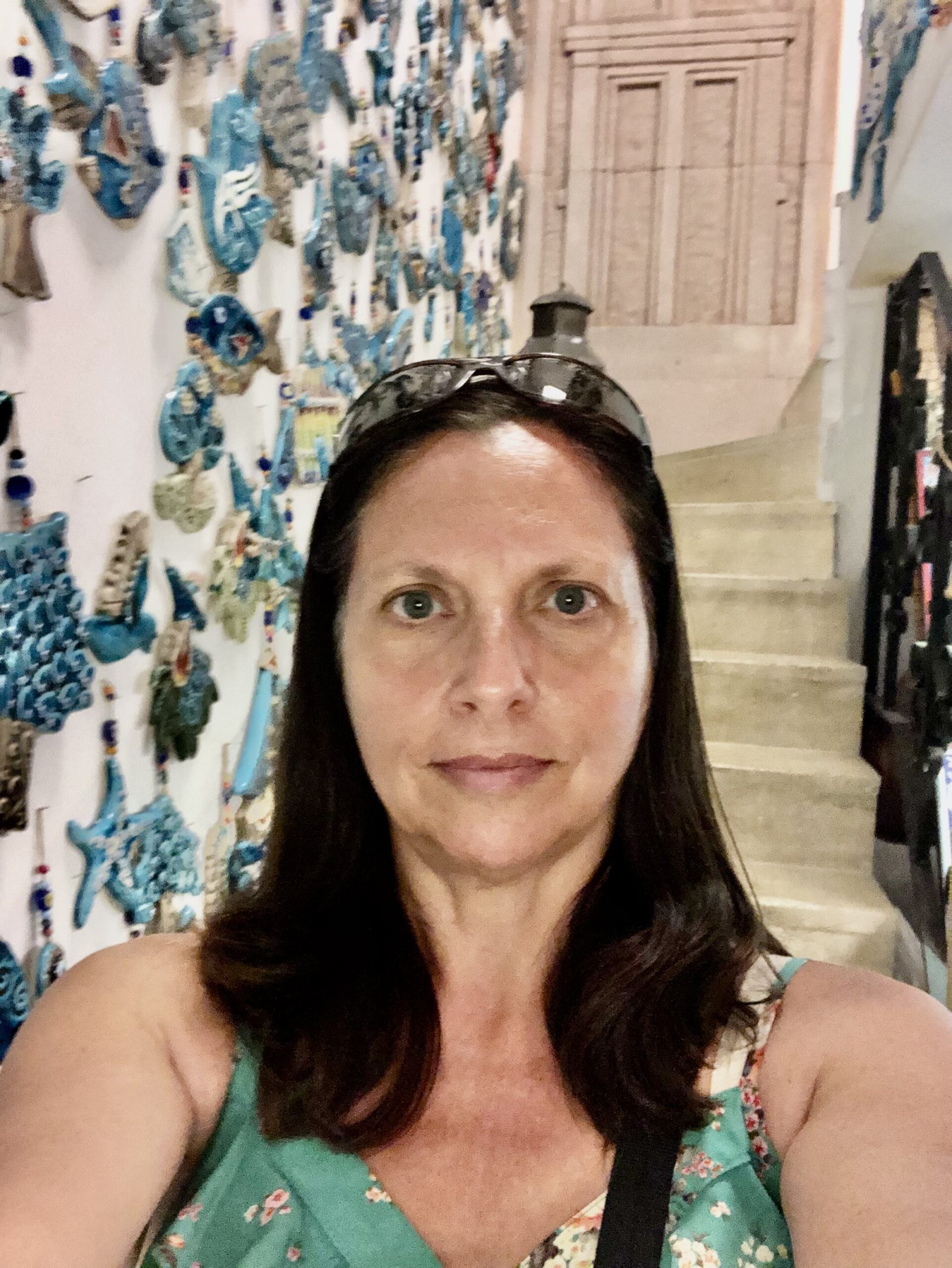

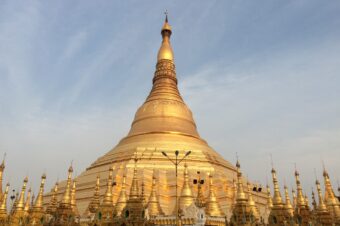


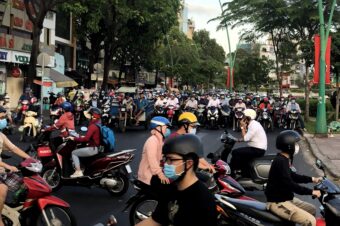
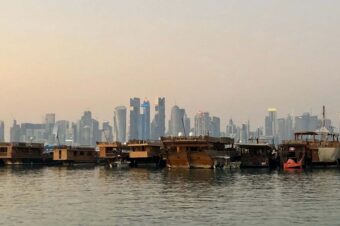
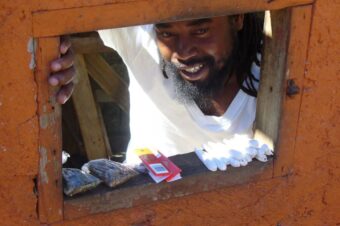
One Response
Where to Find the Best Street Art in Singapore - Life Untraveled
[…] where to find the best street art in Singapore? Well, you've come to the right place! I only spent two days in Singapore but I was shocked by the diversity of street art I came […]